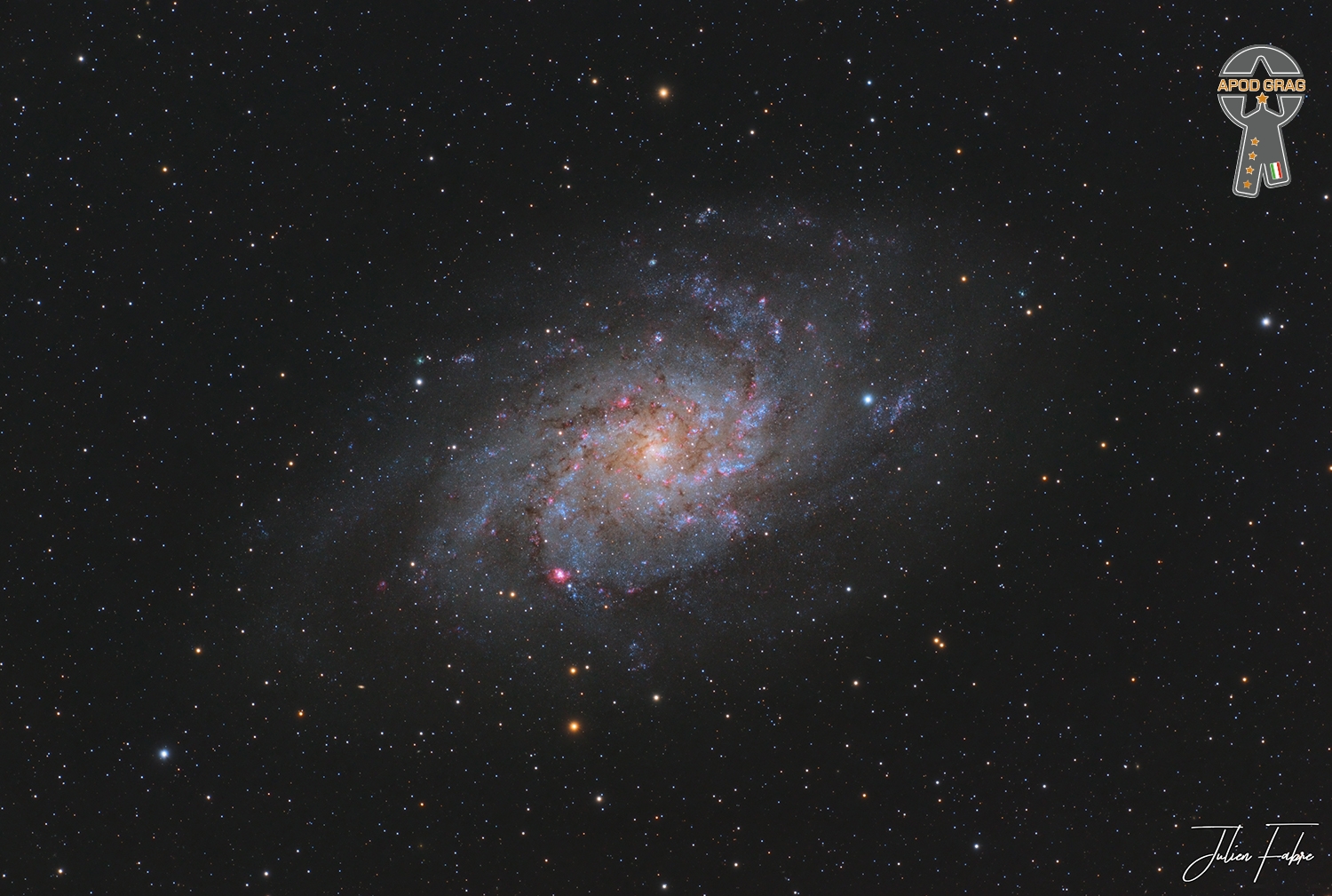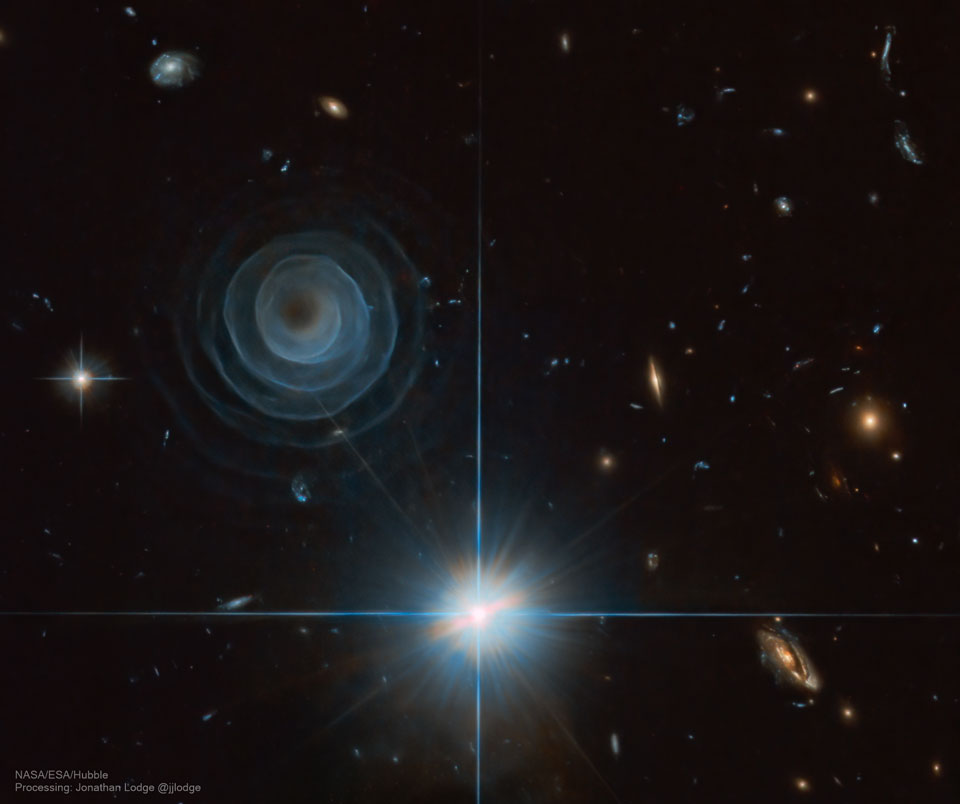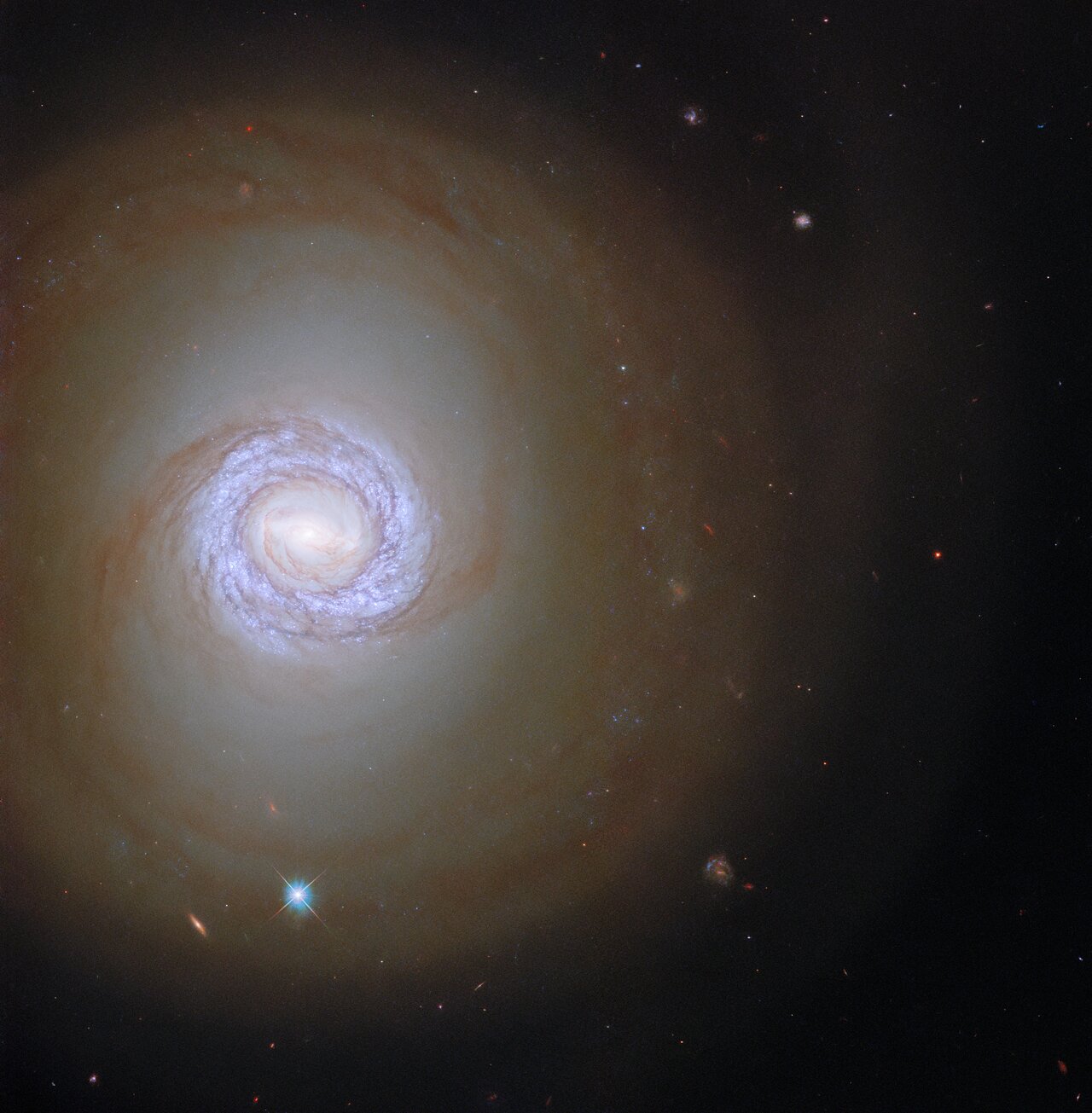Blog
The Triangulum Galaxy is a spiral galaxy 2.73 million light-years (ly) from Earth in the constellation Triangulum. It is catalogued as Messier 33 or NGC 598. The Triangulum Galaxy is the third-largest member of the Local Group of galaxies, behind the Andromeda Galaxy and the Milky Way.

Pastorius suffered from drug addiction and mental health issues, and despite his widespread acclaim, over the latter part of his life he had problems holding down jobs due to his unreliability. In frequent financial difficulties, he was often homeless in the mid-1980s. He died in 1987 as a result of injuries sustained in a fight outside a South Florida after-hours nightclub.
Since his death, his work has continued to be widely influential. He was elected to the DownBeat Hall of Fame in 1988 and was the subject of the 2014 documentary film Jaco.
more...John Paul Densmore (born December 1, 1944) is an American musician, songwriter, author and actor. He is best known as the drummer of the rock band the Doors, and as such is a member of the Rock and Roll Hall of Fame. He appeared on every recording made by the band, with drumming inspired by jazz and world musicas much as by rock and roll.
Densmore is also noted for his veto of attempts by the other two Doors members, in the wake of singer Jim Morrison‘s 1971 death, to accept offers to license the rights to various Doors songs for commercial purposes, as well as his objections to their use in the 21st century of the Doors name and logo. Densmore’s lengthy court battles to gain compliance with his veto, based on a 1960s contract requiring unanimity among Doors members to use the band’s name or music, ended with total victory for him and his allies in the Morrison estate.
Densmore has worked additionally in the performing arts as a dancer and actor, and written successfully as both a playwright and the author of two books on the topic of the Doors, and a third book, The Seekers (2020), on a selection of notable people he has worked with and encountered.
The many honors he shares with the other Doors include a Grammy Award for lifetime achievement and a star on the Hollywood Walk of Fame.
more...Sander Lloyd Nelson (born December 1, 1938) is an Americandrummer. Nelson, one of the best-known rock drummers of the early 1960s, had several solo instrumental Top 40 hits and was a session drummer on many other well-known hits, and released over 30 albums. He lives in Boulder City, Nevada, and continues to experiment with music on keyboards and piano.
His first recording, with a band called the Renegades (Richard Podolor, Bruce Johnston, and Nick Venet), was “Geronimo”, written by Venet, produced by Kim Fowley, and released on the Original Sound Records label. Although it flopped on the national charts, it charted in some of the Mid West markets. The song, along with “Charge”, is part of the soundtrack of 1959 film Ghost of Dragstrip Hollow released by American International Pictures.
more...Jimmy Lyons (December 1, 1931 – May 19, 1986) was an American alto saxophone player. He is best known for his long tenure in the Cecil Taylor Unit. Lyons was the only constant member of the band from the mid-1960s until his death. Taylor never worked with another musician as frequently as he did with Lyons. Lyons’ playing, influenced by Charlie Parker, kept Taylor’s avant-garde musictethered to the jazz tradition.
Lyons was born in Jersey City, New Jersey, United States, and raised there until the age of nine, when his mother moved the family to Harlem and then the Bronx. He obtained his first saxophone in the mid-1940s and took lessons from Buster Bailey
more...Ike Isaacs (December 1, 1919, Rangoon, Burma – January 11, 1996, Sydney, Australia) was a Burmese-English jazz guitarist, best known for his work with violinist Stéphane Grappelli.
Isaacs was self taught on guitar. He started playing professionally in college while pursuing a degree in chemistry. In 1946 he moved to England, where he became a member of the BBC Show Band. During the 1960s and 1970s, he was a member of the Hot Club of London, led by guitarist Diz Disley, which often collaborated with Stéphane Grappelli. He was a member of the band Velvet with Digby Fairweather, Len Skeat, and Denny Wright. In the 1980s, he moved to Australia and taught at the Sydney School of Guitar. He died of cancer in January 1996, at the age of 76.
more...What created the strange spiral structure on the upper left? No one is sure, although it is likely related to a star in a binary star system entering the planetary nebula phase, when its outer atmosphere is ejected. The huge spiral spans about a third of a light year across and, winding four or five complete turns, has a regularity that is without precedent. Given the expansion rate of the spiral gas, a new layer must appear about every 800 years, a close match to the time it takes for the two stars to orbit each other. The star system that created it is most commonly known as LL Pegasi, but also AFGL 3068 and IRAS 23166+1655. The featured image was taken in near-infrared light by the Hubble Space Telescope. Why the spiral glows is itself a mystery, with a leading hypothesis being illumination by light reflected from nearby stars.

Johnny Shuggie Otis (born Johnny Alexander Veliotes, Jr.; November 30, 1953) is an American singer-songwriter, recording artist, and multi-instrumentalist.
Otis’s composition “Strawberry Letter 23” (as recorded by The Brothers Johnson) topped the Billboard R&B chart and reached #5 of the Billboard Hot 100 chart in 1977. He also achieved commercial success with his 1974 single “Inspiration Information” (from the album of the same title), reaching #56 on the R&B chart.
Born in Los Angeles, California, Otis is the son of rhythm and blues pioneer, musician, bandleader, and impresario Johnny Otis, who was of Greekdescent, and his wife Phyllis Walker, who was of African American and Filipino descent. The name “Shuggie” (short for “sugar,” according to his mother) was coined by Phyllis when he was a newborn. Otis began playing guitar when he was two years old and performing professionally with his father’s band at the age of eleven, often disguising himself with dark glasses and a false mustache so that he could play with his father’s band in after-hours nightclubs.
more...Benny Moten (November 30, 1916 – March 27, 1977) was an American jazz bassist.
Moten had a long career as a sideman from the early 1940s, including with Hot Lips Page, Jerry Jerome, Red Allen (1942–49, 1955–65 intermittently), Eddie South, Stuff Smith, Arnett Cobb, Ella Fitzgerald, Wilbur De Paris (1956–57), Buster Bailey, Roy Eldridge, and Dakota Staton (1961–63). Though he never recorded as a leader, he continued performing nearly until the time of his death.
more...Walter Brown “Brownie” McGhee (November 30, 1915 – February 16, 1996) was an American folk music and Piedmont blues singer and guitarist, best known for his collaboration with the harmonica player Sonny Terry.
McGhee was born in Knoxville, Tennessee, and grew up in Kingsport, Tennessee. At about the age of four he contracted polio, which incapacitated his right leg. His brother Granville “Sticks”(or “Stick”) McGhee, who also later became a musician and composed the famous song “Drinkin’ Wine Spo-Dee-o-Dee,” was nicknamed for pushing young Brownie around in a cart. Their father, George McGhee, was a factory worker, known around University Avenue for playing guitar and singing. Brownie’s uncle made him a guitar from a tin marshmallow box and a piece of board.
McGhee spent much of his youth immersed in music, singing with a local harmony group, the Golden Voices Gospel Quartet, and teaching himself to play guitar. He also played the five-string banjo and ukulele and studied piano. Surgery funded by the March of Dimes enabled McGhee to walk.
At age 22, McGhee became a traveling musician, working in the Rabbit Foot Minstrels and befriending Blind Boy Fuller, whose guitar playing influenced him greatly. After Fuller’s death in 1941, J. B. Long of Columbia Records promoted McGhee as “Blind Boy Fuller No. 2.” By that time, McGhee was recording for Columbia’s subsidiary Okeh Records in Chicago, but his real success came after he moved to New York in 1942, when he teamed up with Sonny Terry, whom he had known since 1939, when Terry was Fuller’s harmonica player. The pairing was an overnight success. They recorded and toured together until around 1980. As a duo, Terry and McGhee did most of their work from 1958 until 1980, spending 11 months of each year touring and recording dozens of albums.
more...Robert Lee McCollum (November 30, 1909 – November 5, 1967) was an American blues musician who played and recorded under the pseudonyms Robert Lee McCoy and Robert Nighthawk. He was the father of the blues musician Sam Carr. Nighthawk was inducted into the Blues Hall of Fame in 1983.
McCollum was born in Helena, Arkansas. He left home at an early age and became a busking musician. After a period traveling through southern Mississippi, he settled for a time in Memphis, Tennessee, where he played with local orchestras and musicians, such as the Memphis Jug Band. A particular influence during this period was Houston Stackhouse, from whom he learned to play slide guitar and with whom he performed on the radio in Jackson, Mississippi.
After further travels through Mississippi, he found it advisable to take his mother’s name. As Robert Lee McCoy, he moved to St. Louis, Missouri, in the mid-1930s. Local musicians with whom he played included Henry Townsend, Big Joe Williams, and Sonny Boy Williamson. This led to two recording dates in 1938, the four musicians recording together at the Victor Records studio in Aurora, Illinois. He also recorded under his own name, including “Prowling Night-Hawk” (recorded 5 May 1937), from which he took his later pseudonym. These sessions led to the other musicians pursuing Chicago blues careers.
But McCoy continued his rambling life, playing and recording (for Victor/Bluebird Records and Decca Records) solo and with various other musicians, under various names. Kansas City Red was his drummer from the early 1940s to around 1946.[8] He recorded Kansas City Red’s song “The Moon Is Rising”
more...In this image the NASA/ESA Hubble Space Telescope peers into the spiral galaxy NGC 1317 in the constellation Fornax, more than 50 million light-years from Earth. This galaxy is one of a pair, but NGC 1317’s rowdy larger neighbour NGC 1316 lies outside Hubble’s field of view. Despite the absence here of its neighbouring galaxy, NGC 1317 is accompanied in this image by two objects from very different parts of the Universe. The bright point ringed with a criss-cross pattern is a star from our own galaxy surrounded by diffraction spikes, whereas the redder elongated smudge is a distant galaxy lying far beyond NGC 1317. The data presented in this image are from a vast observing campaign of hundreds of observations from Hubble’s Wide Field Camera 3 and Advanced Camera for Surveys. Combined with data from the ALMA array in the Atacama desert, these observations help astronomers chart the connections between vast clouds of cold gas and the fiercely hot young stars that form within them. ALMA’s unparalleled sensitivity at long wavelengths identified vast reservoirs of cold gas throughout the local Universe, and Hubble’s sharp vision pinpointed clusters of young stars, as well as measuring their ages and masses. Often the most exciting astronomical discoveries require this kind of telescope teamwork, with cutting-edge facilities working together and providing astronomers with information across the electromagnetic spectrum. The same applies to future telescopes, with Hubble’s observations laying the groundwork for future science with the NASA/ESA/CSA James Webb Space Telescope. Links Video One of a Pair

John Lamb (born November 29, 1933) is an American jazz double bassist who was a member of the Duke Ellington Orchestra.
Born in Vero Beach, Florida, Lamb grew up as a child who loved playing music, specializing in the tuba. He left high school to join the United States Air Force as a musician for their military band. He was stationed in Texas and then Montana, where the long winters left him ample time to practice. When the band’s usual string bass player was unavailable for a gig in 1951, the bandmaster asked Lamb if he could play the bass; Lamb immediately said yes, and before long became the band’s new string bassist. He credited his tuba experience for giving him the “feel” to pick up string bass quickly without any prior experience.
Lamb joined Duke Ellington’s orchestra in 1964, and toured with them for three years. Lamb was more of a fan of Miles Davis and Red Garland when he was with Ellington, later saying, “I was very young and very cocky. I thought I knew more than Duke at that time…I have more time today to reflect on the things that were accomplished back then, and the places we traveled to and all the wonderful people that we met. So one has to be careful what one does in his young years, because if they’re fortunate to live long, it all comes back.” In 1966 Lamb performed with Ellington and Sam Woodyard for artist Joan Miró at the Fondation Maeght in Saint-Paul-de-Vence.
Lamb later moved to St. Petersburg, Florida and taught music in public schools as well as St. Petersburg College. Alphonso Johnson was one of Lamb’s students. Lamb was awarded the Jazz Club of Sarasota’s “Satchmo Award” for service to jazz.
more...Billy Hart (born November 29, 1940) is an American jazz drummer and educator.
Hart was born in Washington, D.C., where early on in his career he performed with Otis Redding and Sam and Dave and then with Buck Hill and Shirley Horn. He was a sideman with the Montgomery Brothers (1961), Jimmy Smith (1964–1966), and Wes Montgomery (1966–68).[1] Following Montgomery’s death in 1968, Hart moved to New York City, where he recorded with McCoy Tyner, Wayne Shorter, and Joe Zawinul and played with Eddie Harris, Pharoah Sanders, and Marian McPartland.
Hart was a member of Herbie Hancock‘s sextet (1969–73) and played with McCoy Tyner (1973–74), Stan Getz (1974–77), and Quest (1980s), in addition to freelance playing (including recording with Miles Davis on 1972’s On the Corner)
https://www.youtube.com/watch?v=sKbk1LcsuUM
more...John Mayall, OBE (born 29 November 1933) is an English blues singer, guitarist, organist and songwriter, whose musical career spans over sixty years. In the 1960s, he was the founder of John Mayall & the Bluesbreakers, a band which has counted among its members some of the most famous blues and blues rock musicians.
Born in Macclesfield, Cheshire in 1933, Mayall was the son of Murray Mayall, a guitarist and jazz music enthusiast. From an early age, John was drawn to the sounds of American blues players such as Lead Belly, Albert Ammons, Pinetop Smith and Eddie Lang, and taught himself to play the piano, guitars, and harmonica.
Mayall spent three years in Korea for national service and, during a period of leave, he bought his first electric guitar. Back in England, he enrolled at Manchester College of Art (now part of Manchester Metropolitan University) and started playing with a semi-professional band, The Powerhouse Four. After graduation, he obtained a job as an art designer but continued to play with local musicians. In 1963, he opted for a full-time musical career and moved to London.
more...More Posts
- Cosmos M90
- N. Ramani
- Fela Kuti
- Freddie Cole
- Mickey Baker
- World Fusion Gao Hong · Ignacio Lusardi Monteverde
- Daily Roots Valentine Brodie
- James “Son” Thomas
- Christóbal Colon Sephardi
- Indigenous Peoples Day 2024
- Cosmos GUM 39
- Kenny Neal
- Kazumi Watanabe
- Nikhil Banerjee
- Robert Parker
- World Music Carlos Nakai
- Daily Roots Burning Spear
- Cosmos Caldwell 49
- Nusrat Fateh Ali Khan
- Paul Simon
